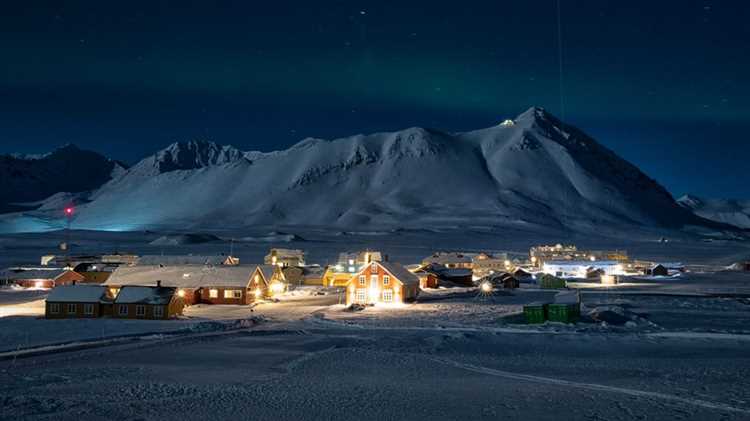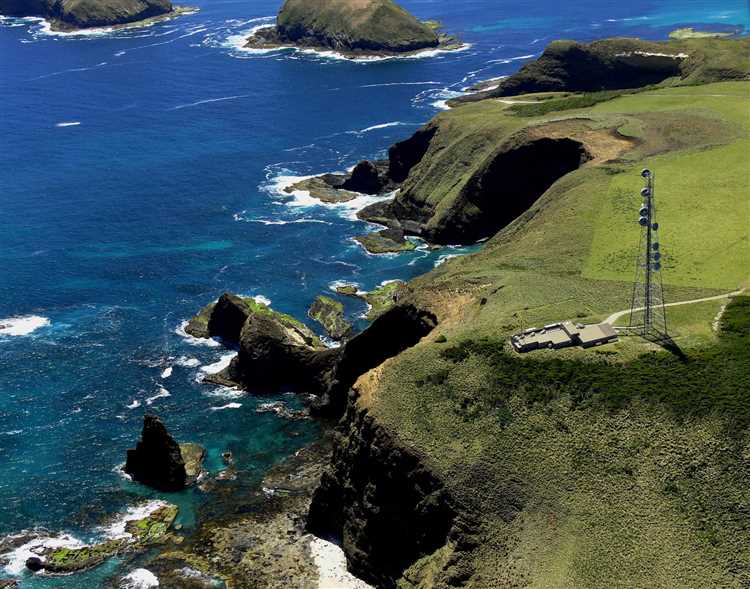
When it comes to breathing clean, fresh air, there is one location on Earth that stands out from the rest. Tucked away in a remote corner of the world, this place boasts some of the purest air on the planet. In a time when pollution levels are soaring and air quality is a growing concern, discovering this haven of pristine air is a breath of fresh air for nature lovers and those seeking solace.
The location of Earth’s purest air is none other than the Antarctic Plateau. Located in the heart of Antarctica, this vast expanse of ice and snow is home to low human activity and is inaccessible to most. The unique combination of its extreme weather conditions, isolation, and minimal pollution sources contribute to the exceptional air quality found here.
Researchers and scientists have conducted numerous studies to confirm the astonishing air purity of the Antarctic Plateau. Their findings reveal that the air here is virtually free from pollutants and particulate matter, making it some of the cleanest and freshest air on the planet. This makes the Antarctic Plateau a valuable location for studying the Earth’s atmosphere, climate, and the impacts of human activities on air quality.
Visiting the Antarctic Plateau is not without its challenges. The extreme cold, harsh weather conditions, and limited access require careful planning and preparation. However, for those who dare to embark on this journey, the reward is an unparalleled experience of breathing in the purest air imaginable. It’s a chance to disconnect from the noise and pollution of modern life and reconnect with nature in its most pristine form.
- Uncovering the Secret of Earth’s Most Pristine Air
- Absence of Human Influence
- Natural Factors
- Exploring the Untouched Beauty of Earth’s Purest Air
- Understanding the Significance of Unpolluted Air on Our Health
- Discovering the Remote Locations with the Cleanest Air on Earth
- Unveiling the Unique Characteristics of Earth’s Purest Air
- Preserving and Protecting the Pristine Air for Future Generations
- Q&A:
- Where can I find Earth’s purest air?
- How is the air in Mauna Loa Observatory measured?
- Why is it important to find the location of Earth’s purest air?
- What are the benefits of breathing pure air?
- Are there any other locations with exceptionally pure air?
Uncovering the Secret of Earth’s Most Pristine Air

Earth is a diverse planet, teeming with exotic landscapes and breathtaking natural wonders. But hidden away in a remote location lies a secret that is often overlooked–the Earth’s most pristine air.
Nestled deep within the untouched wilderness of a remote region, this hidden gem boasts air quality that is unparalleled anywhere else on the planet. The air is so pure and clean that it feels like a rejuvenating elixir to those lucky enough to experience it.
Absence of Human Influence
One of the key factors behind the purity of this air is the absence of human influence. This remote location is devoid of any heavy industries, pollution sources, or bustling cities. It has remained untouched and pristine for centuries, creating the perfect environment for the cleanest air to thrive.
Natural Factors
The surrounding natural factors also contribute to the exceptional air quality. The region is blessed with an abundance of lush forests, which act as natural air purifiers, filtering out impurities and releasing oxygen into the atmosphere.
- The cool ocean breeze that brushes against the coast carries with it the freshness of the sea, further enhancing the air’s purity.
- The elevation of the region also plays a significant role. Sitting high above sea level, the air feels lighter and crisper, making every breath an invigorating experience.
- The lack of heavy traffic and emissions from vehicles ensures that the air remains free from pollutants that are commonly found in densely populated areas.
In this isolated corner of the world, the Earth’s most pristine air remains a well-kept secret. But for those who venture to uncover it, they are rewarded with an unforgettable experience of breathing air so pure that it makes one feel truly connected to nature.
Exploring the Untouched Beauty of Earth’s Purest Air

There is a hidden gem nestled in the heart of Earth where the air is so pure, it feels like a breath of fresh life. This untouched beauty is a testament to the wonders our planet has to offer. Located in a remote corner of the world, far away from the hustle and bustle of city life, this pristine environment is a sanctuary for nature’s best.
As you step into this realm of purity, you can’t help but feel a sense of tranquility washing over you. The air here is free from pollution and toxins, carrying the crisp scent of untouched wilderness. It’s a stark contrast to the polluted cities we have grown accustomed to.
Immerse yourself in the breathtaking landscapes that surround you. Towering mountains covered in lush green forests, glistening lakes reflecting the clear blue sky, and vibrant meadows adorned with colorful wildflowers. Nature’s palette is on full display, inviting you to explore its every nook and cranny.
Take a moment to connect with the wildlife that calls this place home. From majestic eagles soaring through the sky to gentle deer grazing in the meadows, every creature seems to be in perfect harmony with its surroundings. The absence of human interference has allowed these animals to thrive, creating a delicate balance that is rarely seen in today’s world.
But it’s not just the visual beauty that makes this place extraordinary. The purity of the air itself holds numerous health benefits. Breathing in this untainted air can rejuvenate your body and mind, boosting your energy levels and improving your overall well-being. It’s a natural detox for your respiratory system, helping you to feel refreshed and revitalized.
So, if you’re seeking an escape from the pollution and chaos of everyday life, venture into this untouched paradise. Discover the location where Earth’s purest air resides and let its natural wonders captivate your senses. Let the tranquility of this sanctuary restore your soul and remind you of the beauty that lies within our planet.
Understanding the Significance of Unpolluted Air on Our Health
Unpolluted air plays a vital role in maintaining our overall health and well-being. Breathing in clean, fresh air is essential for the proper functioning of our respiratory system and other bodily functions. The significance of unpolluted air on our health cannot be emphasized enough.
When we inhale polluted air, we expose ourselves to harmful toxins and pollutants that can have detrimental effects on our health. These pollutants can include particulate matter, ozone, carbon monoxide, sulfur dioxide, and nitrogen oxides, among others. Prolonged exposure to these pollutants can lead to respiratory problems, allergies, heart diseases, and even cancer.
On the other hand, breathing in unpolluted air has numerous benefits for our health. It helps in improving lung function, enhancing the body’s immune system, and reducing the risk of developing respiratory problems. Unpolluted air also promotes better sleep, boosts energy levels, and improves overall mental well-being.
In addition to the direct impact on our health, unpolluted air also has indirect benefits on the environment. By reducing pollution levels, we can protect ecosystems, preserve biodiversity, and mitigate climate change. It is a collective responsibility to ensure the availability of clean, pure air for future generations to enjoy.
In conclusion, understanding the significance of unpolluted air on our health is crucial. By striving for cleaner air and taking measures to reduce pollution levels, we can improve our overall well-being and contribute to a healthier planet for all living beings.
Discovering the Remote Locations with the Cleanest Air on Earth
The air we breathe is essential for our survival and well-being. Unfortunately, in many parts of the world, air pollution has become a severe problem, affecting both human health and the environment. However, there are still remote and untouched locations on Earth where the air remains pure and pristine.
These locations are often found in remote areas, far away from industrialization and human activity. They can be found in the heart of dense forests, high up in the mountains, or even on isolated islands. These places offer a glimpse into what the air was like before human pollution became prevalent.
One such location with exceptionally clean air is Tumamoc Hill in Tucson, Arizona. Situated away from major cities, it benefits from a lack of industrial pollution and is surrounded by natural desert landscapes. The air here is so clean that it is a popular destination for researchers studying air quality.
Another pristine air location is Cape Grim in Tasmania, Australia. Located on the northwestern tip of the island, it is influenced by the Southern Ocean’s sweeping winds, which blow across thousands of miles of uninhabited land and water before reaching the station. As a result, the air quality here is among the best in the world.
The Amazon Rainforest is yet another remote location with remarkably clean air. This vast rainforest covers a significant portion of South America and is known for its rich biodiversity. The dense vegetation acts as a natural filter, removing pollutants from the air and providing a truly fresh and pure atmosphere.
These remote locations with the cleanest air on Earth serve as important reminders of the importance of preserving our natural environment. They offer an opportunity to experience and appreciate the true beauty of untouched nature, while also reminding us of the urgent need to take action to reduce air pollution worldwide and protect our planet for future generations.
So, if you find yourself seeking a breath of fresh air, consider exploring these remote locations with the cleanest air on Earth. You’ll not only be rewarded with clean and pure air but also with breathtaking natural beauty that is sure to leave a lasting impression.
Unveiling the Unique Characteristics of Earth’s Purest Air
Earth’s purest air can be found in a remote location that remains untouched by human activity. Nestled deep within the pristine valleys of the Himalayas, this hidden gem boasts an atmosphere unlike any other. The air in this region is free from pollutants, making it incredibly pure and suitable for sustaining life.
One of the unique characteristics of this pure air is its high oxygen content. Due to its elevation and proximity to snow-capped peaks, the air is rich in oxygen molecules, providing a refreshing and revitalizing experience for those who are fortunate enough to breathe it. The high oxygen levels contribute to improved physical and mental well-being, as oxygen is essential for proper functioning of the body and brain.
In addition to its oxygen-rich composition, the pure air is also imbued with a sense of tranquility. The serene surroundings and absence of noise pollution create a peaceful atmosphere that allows individuals to relax and rejuvenate. Breathing in this pure air can have a calming effect, relieving stress and promoting a sense of inner peace.
Moreover, this remote location is blessed with a unique aroma that is undeniably refreshing. The absence of pollutants and the abundance of fragrant flowers and plants create a pleasant scent that permeates the air. The natural aromas have been known to uplift spirits and improve overall mood.
The purity of the air in this location is due to its isolation and limited human presence. The absence of industrial activities, traffic congestion, and urban development ensures that the air remains untainted by pollutants. As such, this region stands as a testament to the importance of preserving and protecting our environment in order to maintain the purity of our air.
In conclusion, Earth’s purest air holds a treasure trove of unique characteristics. From its high oxygen content to its serene ambiance and refreshing aroma, this hidden gem in the Himalayas offers a truly invigorating experience. It serves as a reminder of the necessity to cherish and preserve the natural wonders of our planet for the benefit of future generations.
Preserving and Protecting the Pristine Air for Future Generations
As the world becomes more industrialized and urbanized, the quality of air that we breathe is increasingly under threat. However, there are still locations on Earth where the air remains pure and untouched by pollution. It is our responsibility to preserve and protect these areas for the benefit of future generations.
Preserving the pristine air starts with understanding the causes and impacts of air pollution. By studying the effects of human activities, such as fossil fuel combustion and industrial emissions, we can develop strategies to minimize their impact on the environment.
One crucial step in preserving the purity of the air is reducing our reliance on fossil fuels and transitioning towards renewable sources of energy. By investing in clean energy technologies, such as wind and solar power, we can minimize air pollution and decrease our carbon footprint.
Educating the public about the importance of clean air is also essential in preserving its purity. By raising awareness about the health risks posed by air pollution and the benefits of clean air, we can encourage individuals and communities to take action to reduce pollution levels.
Furthermore, implementing and enforcing strict environmental regulations and policies is critical in protecting the air quality. By setting emission standards for industries and promoting sustainable practices, we can ensure that the air remains pure and free from pollutants.
Preserving the pristine air for future generations also involves protecting natural areas and biodiversity. Forests, wetlands, and other ecosystems play a vital role in air purification, as they absorb pollutants and release clean oxygen. By conserving these habitats, we can maintain the quality of air and preserve the balance of nature.
In conclusion, preserving and protecting the pristine air for future generations requires a collective effort. Whether it’s reducing pollution, transitioning to clean energy, raising awareness, or implementing environmental policies, each action contributes to ensuring that future generations can breathe in the purest air possible.
Q&A:
Where can I find Earth’s purest air?
Earth’s purest air can be found in the Mauna Loa Observatory in Hawaii. It is located at an elevation of 3,400 meters, which allows for minimal contamination from human activity.
How is the air in Mauna Loa Observatory measured?
The air in Mauna Loa Observatory is measured using an instrument called the Mauna Loa Observatory Carbon Dioxide Reference Sampler. It samples the air and analyzes its composition to determine its purity.
Why is it important to find the location of Earth’s purest air?
It is important to find the location of Earth’s purest air because pollution and contamination can have negative effects on human health and the environment. By studying and preserving areas with pure air, we can better understand the impact of pollution and work towards reducing it.
What are the benefits of breathing pure air?
Breathing pure air can have several benefits for human health. It can improve respiratory function, increase oxygen flow to the brain, boost energy levels, and enhance overall well-being. Additionally, pure air can also have positive effects on the environment, such as promoting biodiversity and supporting clean ecosystems.
Are there any other locations with exceptionally pure air?
Yes, there are other locations with exceptionally pure air. Some examples include Antarctica, the Amazon rainforest, and remote areas in the Arctic. These regions are known for their minimal human activity and lack of industrial pollution, allowing for the preservation of clean air.